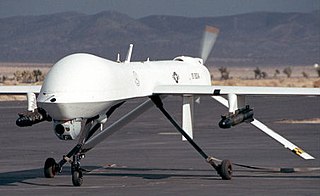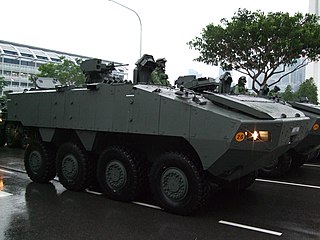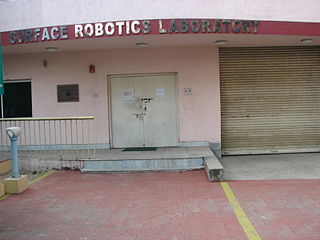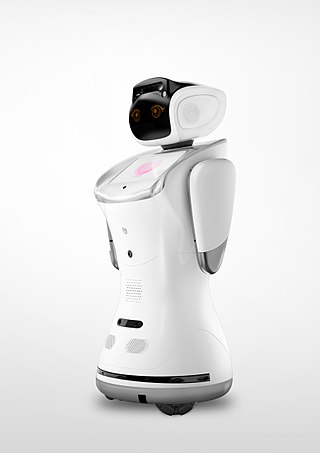Features
The VIPeR robot, designed for enhanced mobility in challenging environments, employs a unique pair of wheel/track systems known as the Galileo Wheel system. This technology was invented by Avishay Novoplanski, and patented by Galileo Mobility Instrument of Israel, allows the wheels to change shape to adapt to various terrains. Additionally, VIPeR features a tail for balance, enabling it to climb stairs and recover from overturns. This capability makes it highly versatile in urban settings, capable of navigating stairs, rubble, dark alleys, caves, and narrow tunnels. As a result, VIPeR serves as a valuable asset for dismounted soldiers by detecting IEDs, booby traps, and alerting them to potential threats.
A notable aspect of VIPeR is its compact design, allowing it to be portable and easily carried by a single person in a backpack along with all necessary gear. Elbit Systems, the manufacturer, has engineered the VIPeR to be lightweight, weighing approximately 11 kg.
VIPeR's small signature enable it to be equipped with various weapons and tools. It is remotely operated through a control harness and a helmet-mounted display. The robot's optional payloads include Pan & Tilt (P&T) cameras, Forward Looking Infrared (FLIR), day/night observation cameras with zoom capabilities, an explosives sniffer, a disrupter, a 9 mm mini-Uzi with a scope and pointer, a grenade releaser, a 4-foot robotic arm, a gripper, and technology for in-building mapping, among other features.
The current operational plan for VIPeR includes deployment with special forces and regular infantry units in high-risk scenarios, such as exploring caves and tunnels, where the safety of human soldiers is a primary concern. Unlike autonomous robots, VIPeR is controlled remotely, relying on human guidance for its operations.
An autonomous robot is a robot that acts without recourse to human control. Historic examples include space probes. Modern examples include self-driving vacuums and cars.

Military robots are autonomous robots or remote-controlled mobile robots designed for military applications, from transport to search & rescue and attack.

The Nomad rover is an uncrewed vehicle designed as a test for such a vehicle to ride on other planets.
The DARPA Grand Challenge is a prize competition for American autonomous vehicles, funded by the Defense Advanced Research Projects Agency, the most prominent research organization of the United States Department of Defense. Congress has authorized DARPA to award cash prizes to further DARPA's mission to sponsor revolutionary, high-payoff research that bridges the gap between fundamental discoveries and military use. The initial DARPA Grand Challenge in 2004 was created to spur the development of technologies needed to create the first fully autonomous ground vehicles capable of completing a substantial off-road course within a limited time. The third event, the DARPA Urban Challenge in 2007, extended the initial Challenge to autonomous operation in a mock urban environment. The 2012 DARPA Robotics Challenge, focused on autonomous emergency-maintenance robots, and new Challenges are still being conceived. The DARPA Subterranean Challenge was tasked with building robotic teams to autonomously map, navigate, and search subterranean environments. Such teams could be useful in exploring hazardous areas and in search and rescue.

The Terrex Infantry Carrier Vehicle (ICV) is an armoured fighting vehicle (AFV) developed by ST Engineering of Singapore and Timoney Technology of Ireland, and produced by ST Engineering Land Systems for the Singapore Army as well as by Turkish auto-maker Otokar as the Yavuz (AV-82) for the Turkish military.

An unmanned ground vehicle (UGV) is a vehicle that operates while in contact with the ground without an onboard human presence. UGVs can be used for many applications where it is inconvenient, dangerous, expensive, or impossible to use an onboard human operator. Typically, the vehicle has sensors to observe the environment, and autonomously controls its behavior or uses a remote human operator to control the vehicle via teleoperation.
The United States Army DEVCOM Ground Vehicle Systems Center (GVSC) (formerly United States Army Tank Automotive Research, Development and Engineering Center (TARDEC)), located in Warren, Michigan, is the United States Armed Forces' research and development facility for advanced technology in ground systems. It is part of the U.S. Army Combat Capabilities Development Command (DEVCOM), a major subordinate command of the U.S. Army Futures Command. GVSC shares its facilities with the United States Army Tank-automotive and Armaments Command (TACOM). Current technology focus areas include Ground Vehicle Power and Mobility (GVPM), Ground System Survivability and Force Protection, among others.
The Battlefield Extraction-Assist Robot (BEAR) is a remotely controlled robot developed by Vecna Robotics for use in the extraction of wounded soldiers from the battlefield with no risk to human life. The humanoid robot uses a powerful hydraulics system to carry humans and other heavy objects over long distances and rough terrain, such as stairs.

Mesa Associates' Tactical Integrated Light-Force Deployment Assembly (MATILDA) is a remote controlled surveillance and reconnaissance robot, created and designed by the 'Mesa Robotics Corporation'. It is available in many different models such as the Urban Warrior, Block II, and Scout, which feature different combinations of components for increased utility. These options include a sensor mount, manipulator arm, weapon mount, fiber optic reel, remote trailer release, and disrupter mount. When purchased the basic system includes the platform, the control unit, and battery charger.

A mobility aid is a device that helps individuals with mobility impairments to walk or improve their overall mobility.

The Legged Squad Support System (LS3) was a DARPA project for a legged robot which could function autonomously as a packhorse for a squad of soldiers or marines. Like BigDog, its quadruped predecessor, the LS3 was ruggedized for military use, with the ability to operate in hot, cold, wet, and dirty environments. The LS3 was put into storage in late 2015.

A wheelchair is a mobilized form of chair using 2 or more wheels, a footrest, and an armrest usually cushioned. It is used when walking is difficult or impossible to do due to illnesses, injury, disabilities, or age-related health conditions. Wheelchairs provide mobility, postural support, and freedom to those who cannot walk or have difficulty walking, enabling them to move around, participate in everyday activities, and live life on their own terms. []

Justin is an autonomous and programmable humanoid robot with two arms, developed by the German Aerospace Center (DLR) at the Institute of Robotics and Mechatronics, located in Wessling, Germany. Introduced in 2009, this wireless robot is controllable through telepresence, a type of technology that allows a person to feel as if they were present from a location other than their true location.
The Learning Applied to Ground Vehicles (LAGR) program, which ran from 2004 until 2008, had the goal of accelerating progress in autonomous, perception-based, off-road navigation in robotic unmanned ground vehicles (UGVs). LAGR was funded by DARPA, a research agency of the United States Department of Defense.

The Tactical Robotics Cormorant, formerly AirMule or Mule, Israel Defense Forces (IDF) codename Pereira, is a flying car unmanned aerial vehicle (UAV) built by Tactical Robotics Ltd., a subsidiary of designer Rafi Yoeli's Urban Aeronautics Ltd., in Yavne, Israel. It will be used in search and rescue operations where it is too dangerous or inaccessible for a helicopter, such as evacuating people from the upper stories of burning buildings, or delivering and extracting police and soldiers while very close to structures, narrow streets, or through holes into confined spaces.

Surface Robotics Laboratory is one of the major R & D Groups in the field of Robotics in Central Mechanical Engineering Research Institute. This group is actively engaged in the development of experimental mobile robots for various unconventional applications.

Remote Applications in Challenging Environments (RACE) is a remote handling and robotics test facility located at Culham Science Centre near Oxford, UK, operated by UKAEA. As part of the UK Government's Robotics and Autonomous Systems Strategy (RAS) this is one of the initiatives that is supporting development and growth in remote handling. RACE uses the broad range of expertise from UKAEA and CCFE's past experience in remote handling used on JET.

Sanbot is an intelligent, cloud-enabled service robot developed by Qihan Technology Co. Ltd., a robotics and AI company who has their headquarters in Shenzhen, China. Qihan has launched three generations of intelligent robots under the Sanbot brand – Sanbot Elf Sanbot King Kong and Sanbot Nano.

The Sabrah light tank is series of armored fighting vehicles developed by Elbit Systems to cater to the Philippine Army's light tank/tank destroyer requirement. The tracked light tank configuration is based on ASCOD 2 platform, supplied by Spanish manufacturer GDELS - Santa Bárbara Sistemas. The wheeled light tank configuration is based on the 8×8 Pandur II platform supplied by the Czech manufacturer Excalibur Army. Elbit Systems received a three-year contract worth $172m to supply the Sabrah light tanks to the Philippine Army in January 2021.













